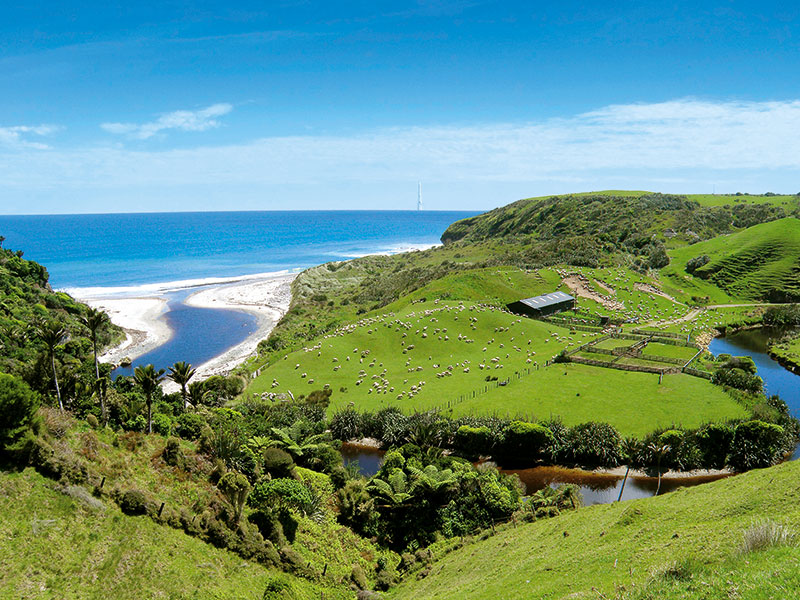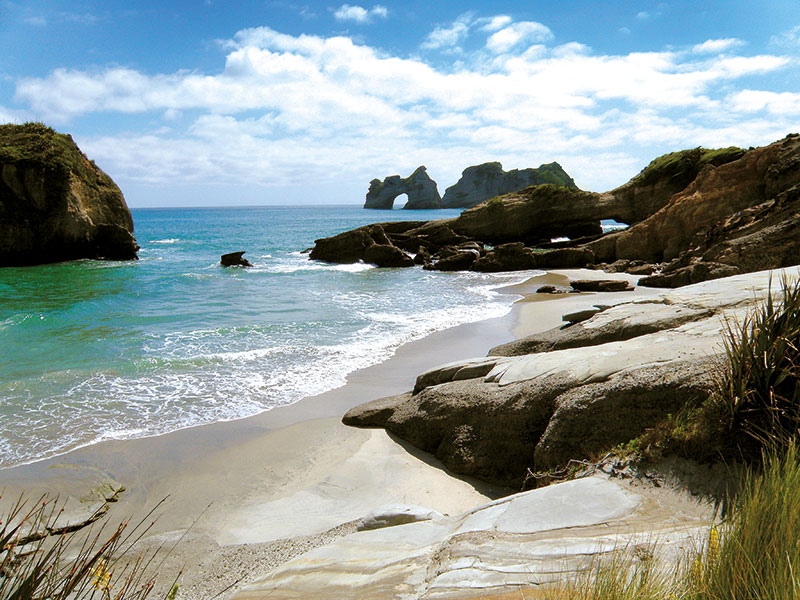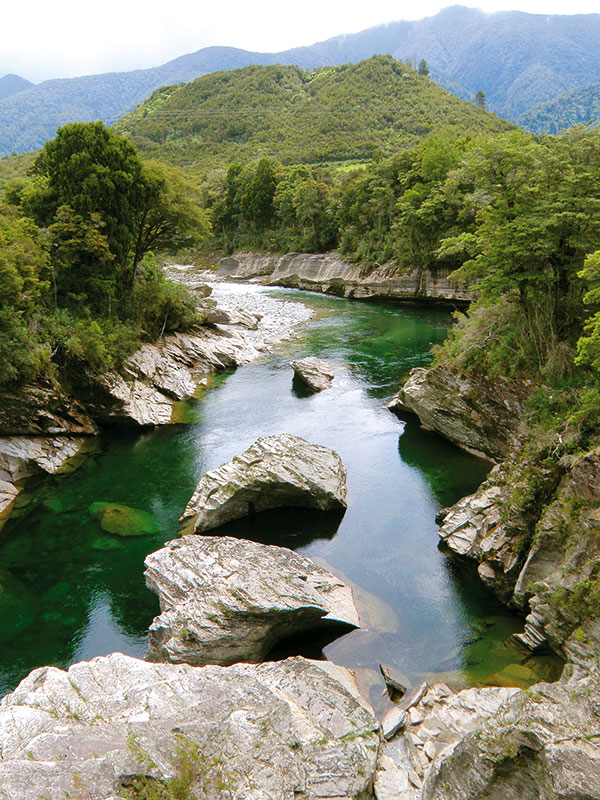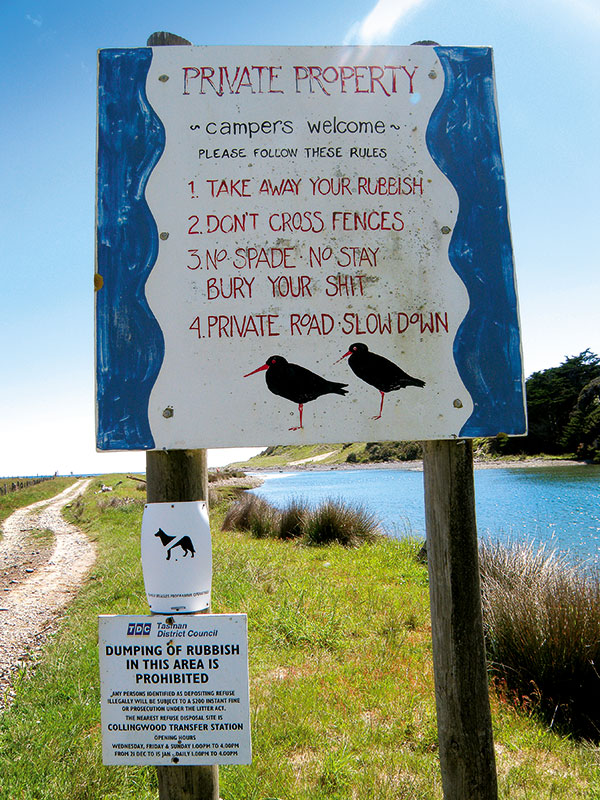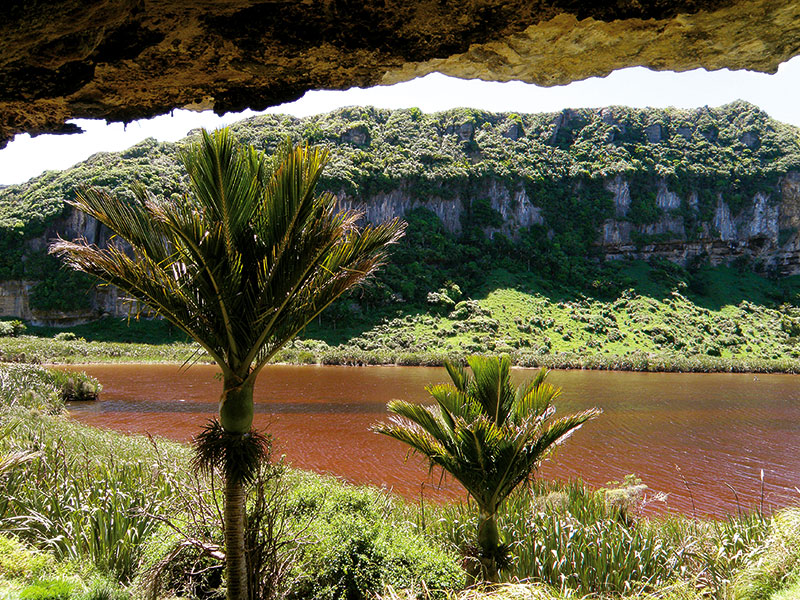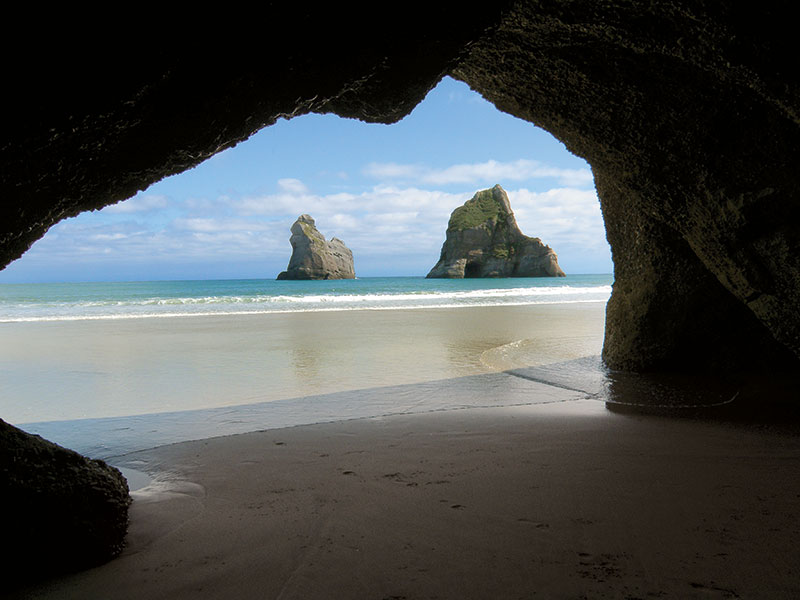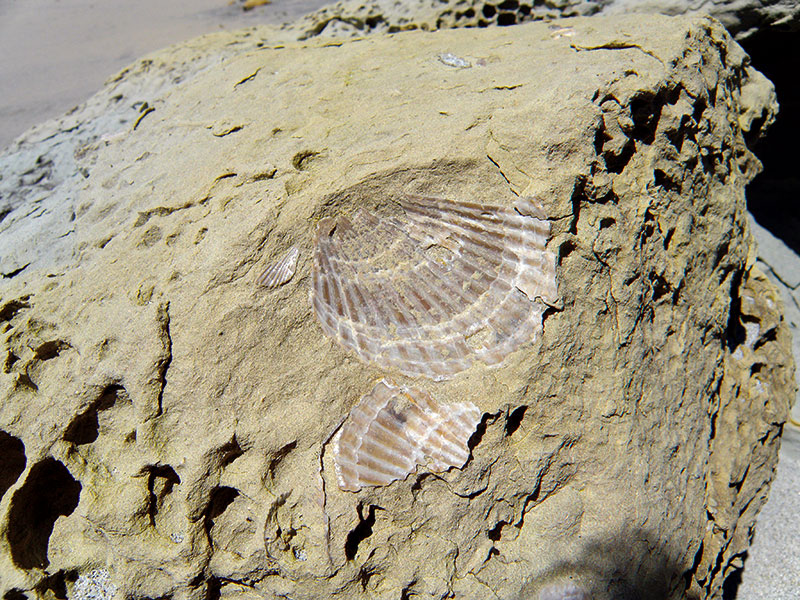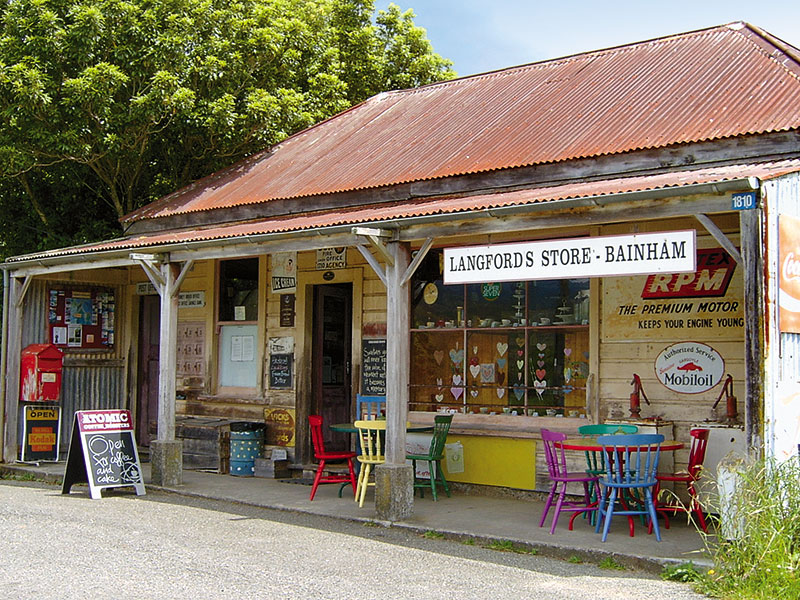Farewell Spit is the South Island's most northerly point and New Zealand's longest sand spit. It is 35 kilometres-long with dunes up to 20 metres in height, formed from ever shifting sand.
Maori were living in the area in 1642 when Abel Tasman first sighted the dunes and put New Zealand on the world map. James Cook named nearby Cape Farewell in 1770 and early settlers adopted the Farewell name for the spit too.
Access along the spit is restricted because it is a nature reserve, though tours take visitors out to the lighthouse built, which was built in 1870 and is now automated. We didn't take a tour this time because we had done so a few years ago, instead we walked some of the tracks at DOC's Puponga Farm Park at the base of the spit.
Cape Farewell & Wharariki Beach
First we walked out to Cape Farewell where we spent some time enjoying the sight of seals cavorting in the surf below us. We then drove to a car park near Wharariki Beach, where there is a loop track across farmland and past lakes to the stunning beach.
Archway Islands, the rock formations off Wharariki Beach are riven with arches and caves and there are caves in the headlands too. After relaxing on the beach with a picnic lunch we completed the loop track and retraced our tracks to the base of Farewell Spit.
There is a walkway here to the seaward side of the spit and along to Fossil Point, where we found some fossils in the rocks and also saw some seals resting. Maybe they were the same ones we had seen frolicking earlier.
Whanganui Inlet & Lake Otuhie
After all that exercise we decided to take a drive the following day and went to explore the Whanganui Inlet, also known as Westhaven, which is on the west coast. This remote area is accessed by a small road between Puponga and Collingwood. The sealed road runs out at the inlet and a narrow gravel road skirts the inlet and then continues down the coast as far as the Anatori River.
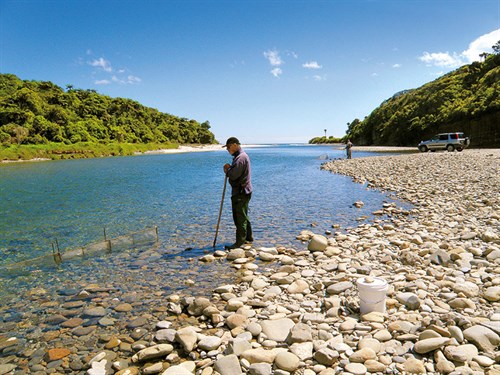
Before heading down to Anatori we took another gravel road round to the Kaihoka Lakes. There is a short walk through nikau groves and bush from one lake to the other, peaceful and scenic. We then followed the road south as it wound around the shoreline and bridged mudflats. The road goes through part of the Kahurangi National Park here and is appropriately rugged. We felt quite brave driving along in the car, but more intrepid motorhomers do take their vehicles here.
On the return trip we decided we should have a little more exercise and walked to Lake Otuhie from a roadside parking area. There were dramatic limestone cliffs around the lake; the area had an almost primeval feel to it.
Whanganui Inlet is the second largest estuary in the South Island. The Inlet has a Marine Reserve in the southwestern end, where all plants and animals are protected, while in the larger, northeastern part of the inlet commercial fishing is banned though traditional, personal fishing, whitebaiting and duck shooting is permitted.
There was very little traffic on the narrow dusty roads and, apart from the motorhome and caravans, we saw very few signs of life.
Collingwood
After some time camped at Puponga we moved down to Collingwood. The sleepy town is a base for tours to Cape Farewell and has a cafe, garage, tavern and takeaway, which also sells a few basic food items.
Collingwood boomed during the gold rush days of the 1850s and there was a suggestion that it be made New Zealand's capital. The town's historic trail and cemetery are reminders of those days although many historic buildings have been lost to fires.
The Aorere Valley nestles between rugged mountain ranges inland from Collingwood. The four-to-five-day Heaphy Track starts (or finishes) at the end of the road and there are other tracks for keen trampers. The Kaituna Track leads up to old gold workings.
We delved a little further into the area's history, first visiting the Devil's Boots at Rockville. These huge limestone formations look rather like upturned boots and have been a tourist attraction since the 1800s. Pioneer Golden Bay photographer Fred Tyree, whose photographs are on display at Collingwood, recorded a Victorian party visiting the 'boots'. The young ladies look like they are sitting checking their emails, but I think they were sketching.
At Salisbury Falls there is a pretty waterfall and swimming hole. The creek and falls are named after a local family, descendants of gold miners. There have been a series of foot bridges here giving access to the goldfields and farmland on the far side of the Aorere River. The first was built in 1887 and was washed away 12 years later. The replacement was built in 1902 and was restored in 2003.
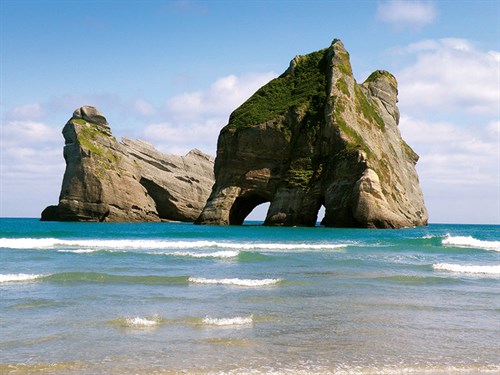
In 2010 the bridge, which was registered with the Historic Places Trust and was a tourist attraction, was in its turn destroyed by a 13.78-metre flood. Now only some posts remain.
We drove back through the valley pondering the forces of nature and stopped for coffee at iconic Langford Store. This general store and post office has been run by the Langford family since 1928 and still retains the original features from that era. The present owner, great-granddaughter of the founder, sells espresso coffee and great baking.
The whole area has interesting history and spectacular scenery; the only crowds here now are the birds.
Local knowledge
There is a comprehensive DOC brochure, Farewell Spit and Puonga Farm Park, which details the walks in this area and provides information about the wildlife. It can be downloaded from the DOC website.
There are several tours along Farewell Spit, information at the DOC Information Centre at Farewell Spit and in Collingwood. There are also horse trekking options.
Freedom camping is allowed in Golden Bay for self-contained vehicles with at least three days storage capacity for drinking water, toilet waste and grey water. Camping is allowed on road reserves as long as there are no signs forbidding camping. Camping is allowed for two nights within a kilometre of a single location. Further information regarding regulations can be found at visitor centres in the area.
There are camp grounds at Collingwood, Wharariki, Pakawau and Puponga.
For the latest caravan reviews and road trip destinations, subscribe to Motorhomes, Caravans & Destinations magazine here.

